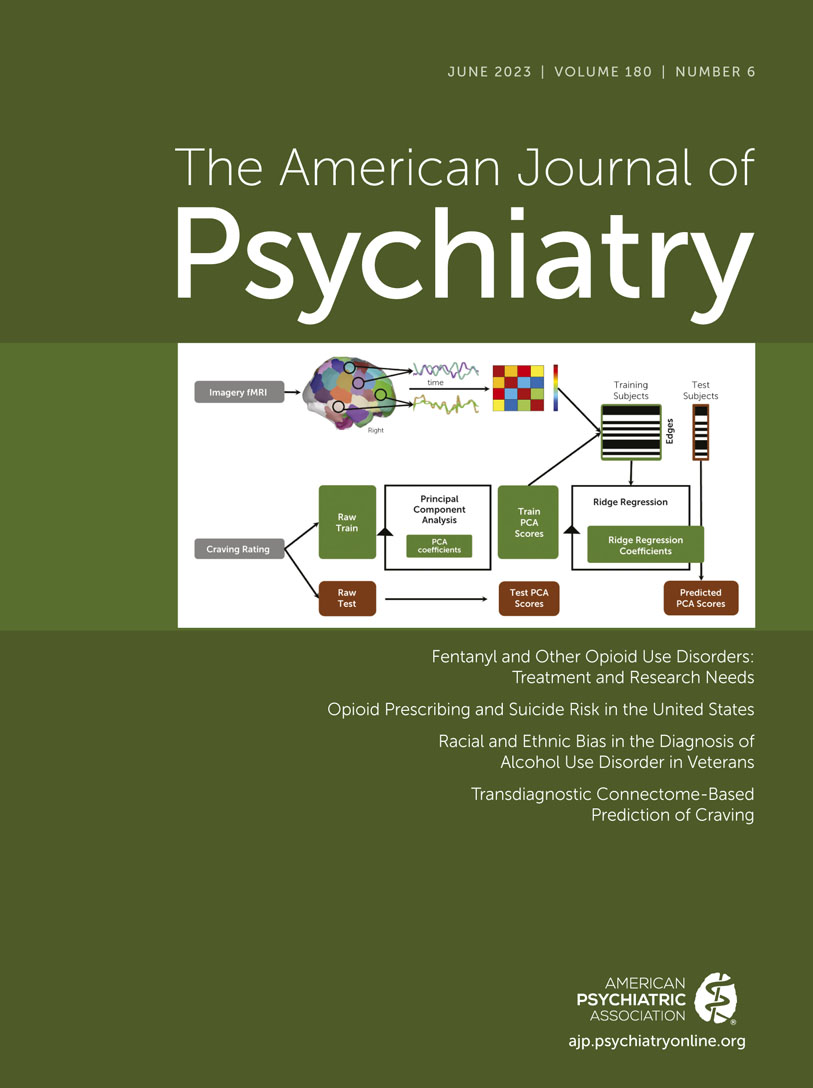Transition From Substance-Induced Psychosis to Schizophrenia Spectrum Disorder or Bipolar Disorder
Abstract
Objective:
The authors investigated transitions to schizophrenia spectrum or bipolar disorder following different types of substance-induced psychosis and the impact of gender, age, number of emergency admissions related to substance-induced psychosis, and type of substance-induced psychosis on such transitions.
Methods:
All patients in the Norwegian Patient Registry with a diagnosis of substance-induced psychosis from 2010 to 2015 were included (N=3,187). The Kaplan-Meier method was used to estimate cumulative transition rates from substance-induced psychosis to either schizophrenia spectrum disorder or bipolar disorder. Cox proportional hazard regression was used to estimate hazard ratios for transitions to schizophrenia spectrum or bipolar disorders associated with gender, age, number of emergency admissions, and type of substance-induced psychosis.
Results:
The 6-year cumulative transition rate from substance-induced psychosis to schizophrenia spectrum disorder was 27.6% (95% CI=25.6–29.7). For men, the risk of transition was higher among younger individuals and those with either cannabis-induced psychosis or psychosis induced by multiple substances; for both genders, the risk of transition was higher among those with repeated emergency admissions related to substance-induced psychosis. The cumulative transition rate from substance-induced psychosis to bipolar disorder was 4.5% (95% CI=3.6–5.5), and the risk of this transition was higher for women than for men.
Conclusions:
Transition rates from substance-induced psychosis to schizophrenia spectrum disorder were six times higher than transition rates to bipolar disorder. Gender, age, number of emergency admissions, and type of substance-induced psychosis affected the risk of transition.
Access content
To read the fulltext, please use one of the options below to sign in or purchase access.- Personal login
- Institutional Login
- Sign in via OpenAthens
- Register for access
-
Please login/register if you wish to pair your device and check access availability.
Not a subscriber?
PsychiatryOnline subscription options offer access to the DSM-5 library, books, journals, CME, and patient resources. This all-in-one virtual library provides psychiatrists and mental health professionals with key resources for diagnosis, treatment, research, and professional development.
Need more help? PsychiatryOnline Customer Service may be reached by emailing [email protected] or by calling 800-368-5777 (in the U.S.) or 703-907-7322 (outside the U.S.).



